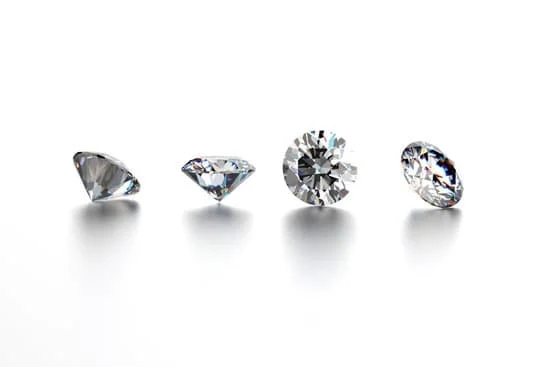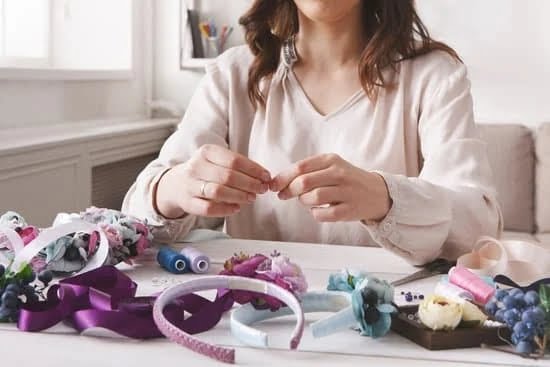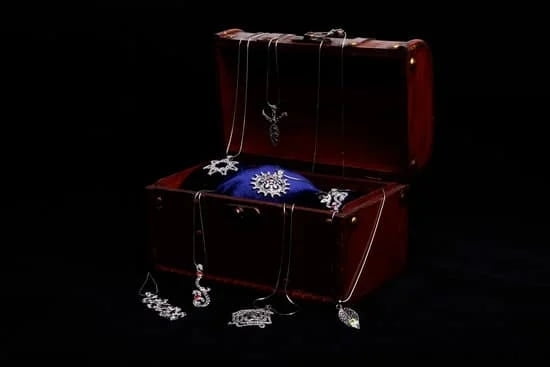Brass jewelry has become increasingly popular in the fashion industry, known for its warm golden hue and beautiful aesthetic. Whether it’s delicate earrings or bold statement necklaces, brass jewelry adds a touch of timeless elegance to any outfit. But why buy it when you can make it yourself? DIY brass jewelry allows you to tap into your creative side while also enjoying the benefits of handmade accessories.
Making brass jewelry at home offers a multitude of advantages. Firstly, it allows you to personalize your accessories and create pieces that perfectly match your style and preferences. With DIY brass jewelry, you have the freedom to experiment with different designs, techniques, and embellishments, resulting in one-of-a-kind pieces that reflect your individuality.
Moreover, crafting your own brass jewelry is a cost-effective alternative to purchasing ready-made pieces. By sourcing and purchasing the materials yourself, you not only save money but also have control over the quality and types of materials used in your creations. This puts you in charge of selecting high-quality brass and gemstones that meet your standards.
In this article, we will guide you through the process of making stunning brass jewelry from scratch. From exploring different types of brass and essential tools needed to perfecting techniques such as cutting and filing, soldering intricate designs, adding gemstones or other embellishments, polishing and finishing techniques, caring for your creations, and storage options – we’ve got it all covered. So grab your tools and let’s dive into the wonderful world of DIY brass jewelry making.
Materials and Tools Needed for Making Brass Jewelry
When it comes to making brass jewelry at home, having the right materials and tools is essential to ensure a successful project. Here is a comprehensive list of what you’ll need:
Materials:
- Brass sheet or wire: This will serve as the main material for your jewelry. You can find brass sheets in various thicknesses, while brass wires are available in different gauges.
- Gemstones or beads: If you want to add some sparkle or color to your brass jewelry, consider incorporating gemstones or beads. Choose ones that complement the overall design of your piece.
- Jump rings and clasps: These findings are essential for attaching components and securing your jewelry.
- Chain or cord: Determine the type of chain or cord that best suits your design. Options include delicate chains, leather cords, or even ribbons.
- Patina solutions: These solutions allow you to add an antique finish to your brass pieces.
- Sealants or coatings: To protect your brass jewelry from tarnishing, consider using sealants or coatings specifically designed for metal.
Tools:
- Jewelers saw: This tool is used for cutting shapes out of the brass sheet.
- Metal files: Files are necessary for shaping and smoothing edges after cutting.
- Jewelry pliers: Pliers with different functionalities such as round-nose pliers, chain-nose pliers, and flat-nose pliers are needed for bending, gripping, and opening jump rings.
- Soldering equipment: If you want to create more intricate designs by soldering brass components together, you’ll need a soldering iron and flux.
Recommended Sources for Materials
Finding high-quality materials is crucial when making brass jewelry. Here are some recommended sources where you can purchase these materials:
- Local craft stores: Visit local craft stores in your area where they often carry a variety of brass sheets, wires, findings, and gemstones.
- Online suppliers: There are numerous online suppliers dedicated to jewelry-making materials. Some popular choices include Fire Mountain Gems, Rio Grande, and Beadaholique.
- Artisan marketplaces: Platforms such as Etsy or ArtFire are great places to find unique and handmade brass jewelry supplies crafted by independent artisans. This can add a special touch to your DIY projects.
Before making any purchases, ensure that the materials you choose are suitable for your skill level and project requirements. Additionally, consider reading reviews or seeking recommendations from experienced jewelers to ensure the quality of the materials you purchase. Now that you have an understanding of the materials and tools needed for making brass jewelry, let’s continue exploring other aspects of this creative process.
Choosing the Right Brass for Your Jewelry
When it comes to making brass jewelry DIY, selecting the right type of brass is crucial. The choice of brass can affect not only the durability and strength of your jewelry but also its aesthetic appeal. In this section, we will explore various types and grades of brass used in jewelry making and provide guidance on how to choose the right brass for your project.
Types and Grades of Brass:
There are several types and grades of brass available in the market, each with its own unique properties. Some commonly used types include yellow brass, red brass, and jeweler’s bronze. Yellow brass is the most commonly used type due to its availability and affordability. It has a bright golden color that mimics the appearance of gold.
Red brass, on the other hand, has a deeper reddish-brown hue which can give your jewelry a distinctive look. Jeweler’s bronze is an alloy made primarily from copper with smaller amounts of zinc and tin. It offers a warm golden hue with a slightly rosy undertone.
Considerations when Choosing Brass:
When selecting the right brass for your jewelry project, there are several factors to consider. Firstly, you should consider the purpose and durability required for your piece.
For example, if you are creating delicate filigree or intricate designs, you may want to choose a softer grade of brass that is more malleable. On the other hand, if you are making rings or bracelets that need to withstand daily wear and tear, you may opt for a harder grade of brass that offers greater strength and durability.
In addition to durability considerations, aesthetics also play an important role in choosing the right brass for your project. Consider whether you prefer a bright golden color or if you’re aiming for a deeper patina over time. Keep in mind that different alloys may produce different shades of patina as they age.
To ensure quality materials for your DIY projects, it is recommended to source your brass from reputable suppliers. They often provide detailed information about the composition and properties of their brass, enabling you to make an informed decision.
With a wide range of types and grades available, choosing the right brass for your jewelry allows you to create beautiful and durable pieces that reflect your personal style. Next, we will delve into essential techniques for working with brass and creating stunning jewelry designs.
Essential Techniques for Brass Jewelry Making
When it comes to making brass jewelry at home, there are several essential techniques that every DIY enthusiast should know. These techniques will not only help you create beautiful and unique pieces but also ensure the durability and quality of your jewelry. In this section, we will introduce you to some foundational techniques such as cutting, shaping, filing, soldering, and creating intricate designs.
Cutting and shaping brass are fundamental skills in jewelry making. You can use a jeweler’s saw or metal shears to cut the brass into desired shapes and sizes. Remember to use protective gloves and eye goggles for safety. Once you have cut your pieces, you can further shape them using files or sandpaper to smooth edges and create more refined contours.
Soldering is another crucial technique in brass jewelry making that allows you to join different components together. To solder brass, you’ll need a soldering torch, flux, solder wire, and a fireproof surface. First, apply flux to the areas where you want the solder to flow and heat the joint with a torch while melting the solder onto it. It’s important to practice proper safety precautions when handling the torch.
Creating intricate designs on brass jewelry can be achieved through various methods like etching or stamping. Etching involves applying an acid-resistant material like nail polish on a brass surface before exposing it to an acid solution that cuts away exposed areas of metal. Stamping involves using metal stamps or punches pressed against the surface of the brass to create patterns or designs.
Remember to always refer to step-by-step instructions and visual aids specific to each technique for better understanding of their execution. As with any skill, practice is key – so don’t be afraid to experiment with different techniques and materials until you achieve your desired results.
Design Inspirations for Brass Jewelry
When it comes to brass jewelry, the possibilities are endless. From bohemian and minimalist designs to bold statement pieces, brass jewelry offers a wide range of design inspirations for every style. Whether you prefer delicate and dainty or eye-catching and intricate, there is sure to be a brass jewelry design that captures your personal taste.
One popular style in brass jewelry is the bohemian look. Boho-inspired brass jewelry often incorporates natural elements such as feathers, gemstones, and leather. These pieces have a free-spirited and earthy vibe, perfect for those who love to embrace nature in their style.
On the other end of the spectrum is minimalist brass jewelry. Characterized by clean lines and simplicity, these designs are perfect for those who prefer a more understated look. Minimalist brass necklaces, earrings, and bracelets offer a sleek and modern aesthetic that can easily be layered or worn on their own for an effortlessly chic look.
For those who want to make a bold statement with their jewelry, there are plenty of options in brass. Statement pieces often feature intricate designs with attention-grabbing details such as oversized pendants or geometric shapes. These pieces are meant to stand out and can add an instant wow factor to any outfit.
| Design | Description |
|---|---|
 | Bohemian Brass Jewelry: This style features natural elements like feathers, gemstones, leather straps, and earthy colors. |
 | Minimalist Brass Jewelry: This style is characterized by clean lines and simplicity, perfect for those who prefer a more understated look. |
 | Statement Brass Jewelry: These pieces feature intricate designs with oversized pendants or geometric shapes, designed to make a bold statement. |
Now that you have seen some examples of brass jewelry designs, you can draw inspiration from these styles and create your own unique pieces. Remember, brass jewelry is highly customizable and allows you to showcase your creativity. Experiment with different techniques, incorporate your favorite gemstones or beads, and let your imagination run wild. The possibilities are truly endless when it comes to designing your own brass jewelry.
Tips for Polishing and Finishing Brass Jewelry
One of the most important aspects of creating brass jewelry is the final polishing and finishing. This step not only enhances the beauty and shine of the piece but also helps to protect it from tarnishing. In this section, we will explore some valuable tips and techniques for achieving a professional finish on your brass jewelry.
1. Cleaning: Before you start polishing, it is essential to clean your brass jewelry thoroughly. Use warm soapy water or a mild jewelry cleaner to remove any dirt, oils, or residue that may have accumulated during the crafting process. Gently scrub the surface with a soft brush or cloth, making sure to reach all the crevices.
2. Polishing: There are several methods you can use to polish your brass jewelry. One popular option is using a commercial metal polish specifically formulated for brass. Apply a small amount of polish onto a cloth or sponge and rub it onto the surface in circular motions until you achieve the desired shine.
3. Adding Patina: If you prefer an antique or aged look for your brass jewelry, you can add patina using various methods. One simple way is to use liver of sulfur solution or other chemical patinas specifically designed for metals like brass. These solutions react with the metal’s surface and create darkened areas or an overall aged appearance.
4. Coating & Sealing: To protect your polished brass jewelry from tarnishing, it’s recommended to apply a coating or sealant after cleaning and polishing. One popular option is clear lacquer spray specially made for metals like brass. Make sure to follow the manufacturer’s instructions when applying the sealant and allow sufficient drying time before wearing the jewelry.
Remember, always handle polished brass jewelry with care to avoid scratches or damage that may undo your hard work. Keep your pieces in separate compartments or pouches when storing them to prevent scratching against other metals. Regularly clean and maintain your brass jewelry to ensure its longevity and continued shine.
By following these tips for polishing and finishing your brass jewelry, you can create stunning pieces that showcase the beauty of this versatile metal. Experiment with different techniques and finishes to add a personal touch to your creations. A well-polished and finished piece of brass jewelry can truly be a statement of craftsmanship and creativity.
Adding Gemstones and Other Embellishments to Brass Jewelry
Brass jewelry is versatile and provides a beautiful canvas for incorporating different embellishments such as gemstones, beads, charms, and other decorative elements. Adding these elements can elevate the design of your brass jewelry and give it a unique and personalized touch. Here are some ways you can incorporate gemstones and other embellishments into your brass jewelry designs:
- Wire Wrapping: Wire wrapping is a popular technique for securing gemstones or beads to brass components. Start by creating a loop at the end of a wire, then thread the gemstone or bead onto the wire, making sure it’s positioned where you want it. Use pliers to wrap the wire tightly around the brass component, ensuring that the stone is securely attached.
- Beading: Beads can be threaded onto a stringing material like nylon cord or beading wire and then incorporated into your brass jewelry design. Consider using different sizes, shapes, colors, and textures of beads to add visual interest and create unique patterns or arrangements.
- Gluing: If you prefer not to use wire wrapping or beading techniques, you can also use adhesive glue specially designed for jewelry-making to attach gemstones or other embellishments directly onto the surface of your brass components. Make sure to choose a glue that dries clear and is suitable for use with metal.
- Charm Attachments: Charms are an easy way to add personality and flair to your jewelry designs. They can be attached using jump rings or soldered directly onto your brass components. Choose charms that complement the style of your jewelry piece, whether it’s vintage-inspired, bohemian, whimsical, or minimalist.
- Setting Gemstones: For more intricate designs using gemstones, consider using bezel settings or prong settings in your brass pieces. Bezels are metal frames that hold gemstones in place while prongs provide a delicate and secure grip. These settings require more advanced techniques such as soldering and stone setting, so it’s recommended to practice on less valuable materials before moving on to precious gemstones.
When adding embellishments to your brass jewelry, pay attention to the balance and overall aesthetic of your design. Experiment with different combinations of colors, shapes, and textures to create a statement piece that truly reflects your personal style.
Remember to consider the weight of the added elements, as heavier gemstones or beads may require sturdier attachments. With practice and creativity, you can create brass jewelry that showcases both the beauty of the metal and the dazzling allure of gemstones or other embellishments.
Caring for and Storing Your Brass Jewelry
Proper care and storage of brass jewelry are essential in maintaining its longevity and shine. By following the right techniques and practices, you can ensure that your brass jewelry remains in beautiful condition for years to come. In this section, we will discuss the best methods for caring for your brass jewelry and offer tips on how to store it effectively.
Cleaning Brass Jewelry:
- Regular cleaning is necessary to remove dirt, oils, and tarnish from your brass jewelry. To clean your pieces, you can use a mild soap or detergent mixed with warm water.
- Gently scrub the jewelry with a soft-bristled toothbrush or cloth, paying attention to any intricate designs or tight spaces.
- Rinse the jewelry thoroughly with clean water and pat it dry with a soft towel.
- Avoid using abrasive cleaners or harsh chemicals as they can damage the surface of the brass.
Maintaining Shine:
- To maintain the shine of your brass jewelry, you can use a brass cleaner specifically designed for this purpose. Follow the instructions on the cleaner’s packaging carefully.
- Another option is to create a paste using equal parts of lemon juice or vinegar and baking soda. Apply this paste to your brass jewelry, let it sit for a few minutes, and then rinse thoroughly with water before drying.
- A quick way to restore shine on smaller pieces is by using a polishing cloth made specifically for metals.
Preventing Tarnishing:
- Brass naturally tarnishes over time due to exposure to air and moisture. However, there are steps you can take to slow down this process.
- After wearing your brass jewelry, make sure to wipe it clean with a soft cloth before storing it. This helps remove any accumulated oils or sweat that may accelerate tarnishing.
- Store your brass jewelry in an airtight container or ziplock bag when not in use. Place anti-tarnish strips or sachets inside the container to absorb moisture and prevent tarnishing.
- Avoid exposing your brass jewelry to moisture, chemicals, or extreme temperature changes, as these can accelerate tarnishing.
Storing Brass Jewelry:
- Ideally, each piece of brass jewelry should be stored individually in a soft pouch or wrapped in a cloth to prevent scratches.
- Keep your brass jewelry away from direct sunlight as prolonged exposure can cause fading or discoloration.
- If you have limited storage space, consider using a hanging jewelry organizer with individual compartments to prevent tangling and damage.
By following these tips for caring and storing your brass jewelry, you can ensure that it stays beautiful and maintains its shine over time. Remember, proper care is crucial in preserving the quality and longevity of your handmade pieces.
Conclusion
One of the key benefits of making brass jewelry at home is the sense of satisfaction and accomplishment that comes with creating something by hand. Each piece you make becomes a reflection of your own style and skill. It also provides a great opportunity for self-expression and can be a therapeutic activity to relax and unwind.
Additionally, DIY brass jewelry making allows for cost savings compared to purchasing ready-made pieces from stores or designers. With the right tools and materials, you can create high-quality brass jewelry at a fraction of the price. This opens up endless possibilities for designing matching sets or experimenting with different styles without breaking the bank.
So, why not give DIY brass jewelry making a try? Get started today by exploring different techniques, experimenting with designs, and letting your creativity shine through. Whether you’re a beginner or an experienced jewelry maker, making brass jewelry at home offers a rewarding and fulfilling experience that will surely inspire your inner artist.
Additional Resources and Recommendations
In conclusion, creating brass jewelry DIY can be a rewarding and fulfilling experience. Not only does it allow you to express your creativity, but it also provides a unique opportunity to design and craft personalized pieces that reflect your individual style. By following the techniques and tips outlined in this article, you have all the necessary tools to embark on your brass jewelry-making journey.
To further enhance your skills and expand your knowledge in this craft, there are numerous additional resources and recommendations available to assist you. Books dedicated to brass jewelry making can provide in-depth instructions, advanced techniques, and inspiration for new designs. Websites and online communities offer a platform for connecting with fellow enthusiasts, sharing ideas, seeking feedback, and learning from experienced makers.
When it comes to acquiring the materials needed for brass jewelry making, it is crucial to source from reputable suppliers or brands known for their quality products. Researching trusted sources online will help ensure that you obtain reliable materials that will not compromise the durability or aesthetic appeal of your creations.
Remember, the world of DIY brass jewelry is as vast as your imagination allows. Experiment with different techniques, explore various styles and designs, mix metals or incorporate gemstones-it’s all up to you. Embrace the joys of handmade craftsmanship and allow your creativity to flourish as you embark on this exciting journey in DIY brass jewelry making.
Frequently Asked Questions
How is brass jewellery made?
Brass jewelry is typically made through a process called casting or fabrication. In the casting method, a mold is first created using wax or another material. The mold is then filled with molten brass, which solidifies to form the desired shape of the jewelry piece.
The jewelry piece may then undergo additional processes like polishing, plating, or stone setting to enhance its appearance. In the fabrication method, brass sheets or wires are cut, shaped, and soldered together to create intricate designs. These two methods provide flexibility in creating various styles and designs for brass jewelry.
Is brass good for jewelry making?
Brass can be a great material for jewelry making for several reasons. One of its advantages is its affordability compared to precious metals like gold or silver. This makes it more accessible for both consumers and jewelers to work with when creating unique pieces.
Brass also offers versatility in terms of design possibilities due to its malleability, allowing for intricate details and patterns to be included in the jewelry. It can be easily manipulated into different shapes and forms without compromising its structural integrity. Additionally, brass has good corrosion resistance properties, which means that jewelry made from this alloy can maintain its appearance over time with proper care.
What kind of brass is used for jewelry?
Various types of brass alloys are used for making jewelry, but one commonly used type is known as “jeweler’s brass” or “yellow brass.” This alloy consists primarily of copper (around 85%) and zinc (around 15%). The high copper content gives jeweler’s brass a warm golden hue similar to gold, making it an attractive option for jewelry makers who want their creations to resemble gold at a fraction of the cost.
Jeweler’s brass also possesses good strength and durability, making it suitable for everyday wear. Other types of specialized brass alloys may contain additional elements such as nickel or tin to achieve specific desired properties like improved hardness or color variations.

Welcome to my jewelry blog! My name is Sarah and I am the owner of this blog.
I love making jewelry and sharing my creations with others.
So whether you’re someone who loves wearing jewelry yourself or simply enjoys learning about it, be sure to check out my blog for insightful posts on everything related to this exciting topic!





